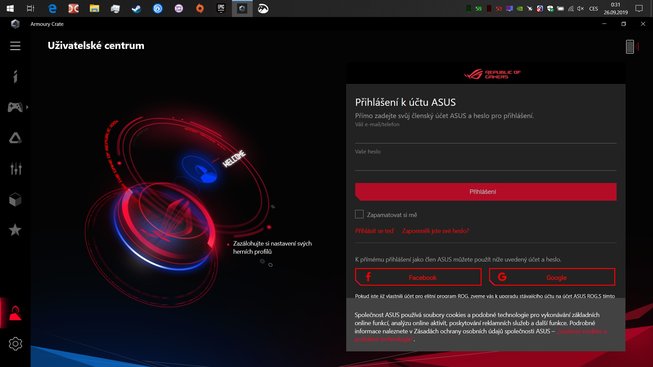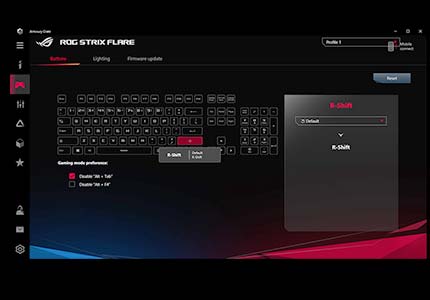

- #ASUS ARMOURY CRATE OVERCLOCK INSTALL#
- #ASUS ARMOURY CRATE OVERCLOCK MANUAL#
- #ASUS ARMOURY CRATE OVERCLOCK SOFTWARE#
- #ASUS ARMOURY CRATE OVERCLOCK PLUS#
- #ASUS ARMOURY CRATE OVERCLOCK FREE#
I’m kidding, of course, but the reality is not far off. I now have more ASUS apps and services installed than third-party programs. If it’s in Armoury Crate then it should be installed with it. I would also cut dependencies on other ASUS apps. On ASUS motherboards the options are there, so why not on laptops? Performance-related profiles and fan curves should be added to the BIOS/UEFI.
#ASUS ARMOURY CRATE OVERCLOCK INSTALL#
Then allow you to only install what you need, nothing more, nothing less. The app needs to be stripped down to the bare minimum.
#ASUS ARMOURY CRATE OVERCLOCK SOFTWARE#
It’s just not OK for a company that prides itself on its engineering prowess to release software this bad. This is my own opinion, of course, but I do think ASUS needs to rework Armoury Crate from the ground up. With G-Helper you even get ASUS RGB software control, at a basic level, without the need to install Armoury Crate. It offers 95% of the Armoury Crate functionality without the bloatware (yes, I consider ASUS Armoury Crate bloatware, you can quote me). G-Helper made me fall in love again with my ASUS ROG laptop.
#ASUS ARMOURY CRATE OVERCLOCK FREE#
Looking for an Armoury Crate alternative? Try G-Helper, a free piece of software that looks very promising. I found out about this from forums, not from ASUS’s documentation. It was after quite a bit of research that I found out various other programs needed to be installed, including the MyASUS app, which does little other than display OSD notifications.Īfter that, these missing options would appear in Armoury Crate. Also, there was no option to automatically switch to a low refresh rate for the screen when on battery, and no ASUS panel overdrive toggle either. Some options don’t show up until you install additional software – I’ve watched quite a few YouTube reviews before deciding on this laptop, so after getting mine I couldn’t figure out why the OSD wasn’t notifying me of profile changes for example. It feels like it’s about to crash any minute. The software is slow, buggy, and unintuitive – this is equally bad: everything you do within the app takes time, and it is sluggish, even on a high-end device such as this. This is what drives me mad and I’m sure will make me completely uninstall Armoury Crate in the future, once I find alternatives. The list of newly added ASUS services is even longer:

#ASUS ARMOURY CRATE OVERCLOCK MANUAL#
Nothing to complain about here.īesides these three ASUS-specific performance profiles there’s the option to customize one or more Manual profiles, and you can even revert to Windows’s power plans. Also, your choice is remembered for both plugged-in and on-battery states. There’s even a dedicated keyboard shortcut that switches between Silent, Performance (default), and Turbo. You can move the panels around and turn them On or Off.
#ASUS ARMOURY CRATE OVERCLOCK PLUS#
On the right side of the interface, you’ll see a bunch of panels, including CPU stats (frequency, usage, temperature, voltage), GPU stats (chip frequency, usage, temperature, memory frequency, voltage, maximum TGP value, and GPU power saving mode currently active), Memory and Storage plus quite a few others. Performance profiles – on a laptop, it’s pretty amazing that you get the option to control CPU power limits, GPU max temperature target & overclocking, fan profiles, MUX switch configuration, and display panel overdrive. While I wish Armoury Crate was a much better piece of software, I do reckon it does a few things well.


 0 kommentar(er)
0 kommentar(er)
